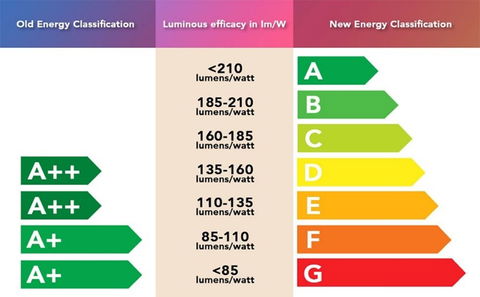As a result of the development of increasingly energy-efficient products, the differences between the A++ and A+++ designations have become harder to recognise.

Question: What are the consequences of the required energy labeling rescaling for LED lamps?
Answer: New energy labelling requirements have been in place since autumn 2021*. Since 1 October of that year, energy-related and lighting products must have a rescaled energy label on their packaging. This new label is designed to empower end users to choose energy-efficient products and encourage competition between manufacturers to improve energy efficiency.
As a result of the development of increasingly energy-efficient products, the differences between the A++ and A+++ designations became harder to recognise. To address this issue, a simpler A to G scale was introduced. This is why many LED lamps now appear in a lower every-efficiency class than before, despite no change in energy consumption. For example, a product in the A++ energy-efficiency class became a Class D or lower.
At Signify, an important technology breakthrough set the stage for the launch of Philips UltraEfficient LED bulbs with Class A energy efficiency. This range of products can answer your customers’ sustainability demands, affording an investment that pays for itself in as little as four months, depending on the lamp.
The Philips A Class LED bulb is ultra-energy-efficient, with an efficacy of up to 210 lm/W. It saves up to 60% energy and offers 3.5 times the lifetime compared to standard LED bulbs. This makes it an excellent choice for those looking to reduce their energy consumption and carbon footprint. Find more in the news section here.


